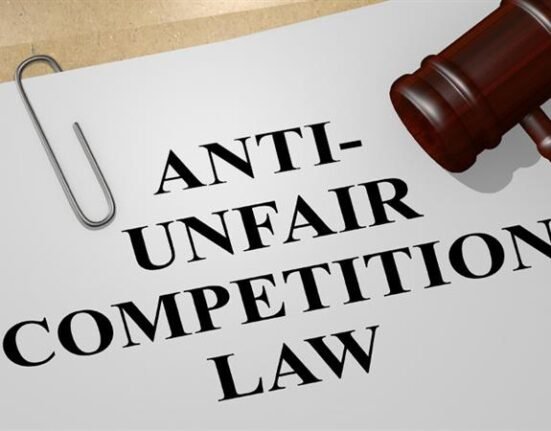NEW YORK, NEW YORK – JUNE 23: A ‘Superpower’ billboard featuring Snoop Dogg is seen in Times Square … [+]
The concept of Web3 proposes to provide the next evolutionary step of the internet, prioritizing user sovereignty, utilizing blockchain technology, enabling trustless transactions, and establishing decentralization.
Meanwhile, Real-World Assets (RWAs) are increasingly presented as critical aspects to the future of traditional finance (TradFi), encompassing both tangible and intangible asset utilization.
When considering the impact of integrating RWAs into Web3, there are clear implications on the consumer experience with regard to accessibility, security, and transparency. Ranging from investment strategy and practice to holistic asset management, the impact of the combination of RWAs and Web3 pose a practicality that was not previously possible.
Exploring the fusion of RWAs with Web3 highlights how this blend enhances consumer experience through increased liquidity, fractional ownership, and transparent transactions. Taking the backdrop of the evolving internet and financial spaces into consideration reveals insights into the tangible and intangible aspects of RWAs, their tokenization in blockchain technology, and the potential for democratizing asset accessibility.
The narrative extends from the present to the near future, featuring insights from industry experts who address the practicality and regulatory challenges of integrating the two spheres, underscoring the significant shift this integration represents for TradFi and DeFi globally.
RWA-Web3 Integration
RWAs consist of tangible and intangible real-world assets, and both are critical for securing innovation, brands, creations, and ownership. Tangible assets, literally physical in nature, include real estate, physical artwork, and commodities such as oil or gold. Whereas intangible assets lack physical form, such as copyrights, trademarks, intellectual property rights, and patents.
Web3 represents the step up from the modern internet experience, referred to as Web2 and characterized by the rise of interactivity, social media, and user-generated content. To transition to Web3, the fundamentals of decentralized finance (DeFi) have to be incorporated. Powered by blockchain technology, this stage of internet evolution entails the democratization of finance by removing TradFi intermediaries and introducing digital asset ownership via Non-Fungible Tokens (NFTs).
Modern integrations of RWAs into Web3 are already underway. The Singapore Central Bank launched ‘Project Guardian’ in late 2022 to explore the potential application of DeFi for wholesale funding markets. The “first pilot” involved banks such as JP Morgan and DBS
DBS
I spoke with Alberto Fernández, CEO & Co-Founder at ENO, a Web3 hub for decentralized social clubs, to discuss his perspective on the integration of RWAs in Web3.
He stated, “Web3 technology enhances transparency and security and provides us with the opportunity to explore new definitions of value and ownership. Combined with RWAs, we are excited to see what the future holds where users can build, enhance each other’s lives and those of others, not just through shared experiences in the digital space, but also through the meaningful connections created in real life.”
Integration Implications
NFTs, offering digital ownership and the utility that ownership entails, enables the authentication of property titles of non-physical assets via blockchain tech immutability. This presents the opportunity to securely and transparently represent RWAs through tokenization, facilitating increased liquidity in and outflows, while democratizing asset accessibility.
As a developing technology, the regulatory magnifying glass rises to the occasion, ensuring compliance and adherence to legal framework alongside smart contract security, and legality. The problem here arises as the result of a lack of regulatory and legal certainty in this somewhat under-regulated sector.
Legal frameworks are still in development for the governance of RWAs’ integration into Web3. As a result, the integration of the two will certainly present regulatory hurdles in the future; some that may be circumvented, others unavoidable.
To further understand the challenges RWA companies face, I reached out to William Ross, Founder of DePIN Daily and Project Manager at Anser Advisory, a national capital program and project advisory firm.
“Besides stablecoins, tokenizing RWAs is fairly new in practice, so many companies are having to move much more slowly than they would like to,” he said. “Without a clear framework to work in, these companies are forced to tiptoe around regulators. Plus, while tokenizing assets like real estate is a great way to remove certain frictions and streamline processes, tokenizing an already-illiquid asset doesn’t guarantee added liquidity.”
Consumer Experience
The impact on consumer experience begins with RWA tokenization, granting once-traditionally illiquid assets access to liquidity and fractional ownership. This enhances consumer control of their investment portfolios by gaining access to previously inaccessible high-cost assets, such as real estate.
Fractionalization and tokenization of these assets is made secure by blockchain technology and its capacity for the immutability of ownership records and transaction history. This transparency can instill trust in TradFi investors unfamiliar with crypto or DeFi while keeping to the principles of Web3 decentralization.
The total market capitalization of RWA tokens on CoinMarketCap reveals that almost $57 billion in liquidity has already made its way into the space, with roughly $3.4 billion in 24-hour trading volume on April 1.
Hurdles Ahead
Although RWAs and Web3 may seem in close proximity in a synergistic sense, bridging the gap between the two requires global regulatory compliance, with emphasis on ‘global.’ Regulatory disparity across borders creates an obstacle course of regulations that must be tackled before the integration of RWAs into Web3 can legally and safely be introduced into the consumer experience.
For example, the Securities and Exchange Commission (SEC) has actively discussed the topic of the regulatory framework for digital assets for a number of years, focused on regulating digital assets deemed securities. Whereas Europe’s Markets in Crypto-Assets (MiCA) regulatory framework provides broad crypto asset regulation across member states of the European Union (EU).
For successful global integration, RWAs and Web3 must navigate state vs. state regulatory differences in the U.S., adhere to EU MiCA regulations, and then be classed as either a non-security or security to ensure SEC regulatory compliance.
Another significant challenge ahead is interoperability scaling between blockchains and the smooth management and transference of tokenized RWAs. Though multiple solutions are in development and being tested, such as Chainlink’s Cross-Chain Interoperability Protocol (CCIP), many blockchains are still tackling this issue.
Despite the hurdles ahead, the fusion of RWAs with Web3 offers several compelling use cases for consumer experience, including market accessibility, portfolio control, and liquidity access.
If and when the integration comes to fruition, the implications for future financial accessibility and asset management would be forever changed, as TradFi meets DeFi: face-to-face, token-to-token.







